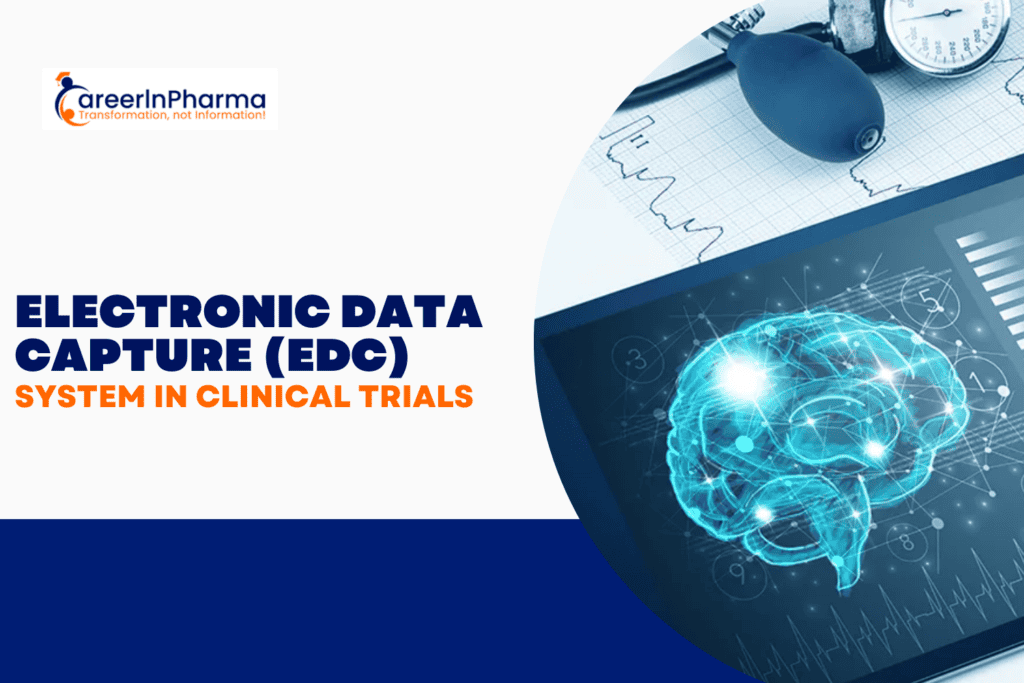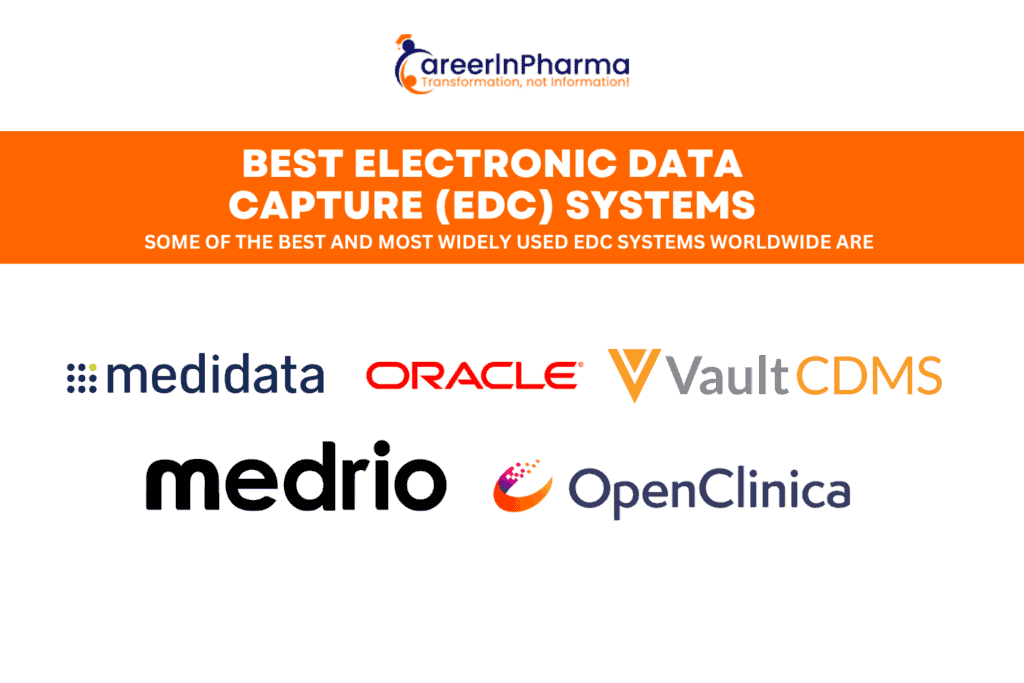
An Electronic Data Capture (EDC) system is software that stores patient data collected in clinical trials. Data is typically recorded on paper, then transcribed into the system, and saved in an electronic case report form (eCRF). In today’s fast world, numerous clinical trials are moving to EDC software and replacing paper records with electronic records. Sponsors, Clinical Research organizations (CROs), and sites have adopted EDC systems to carry out both simple and complex trials in all phases of research. Electronic Data Capture (EDC) software is mainly designed to streamline data collection.
Different Types of EDC Systems
There are different types of EDC systems, categorized by the technology they use:
- Licensed Electronic Data Capture (EDC): This is an on-premise client-server-based EDC system model. Users download and install EDC software on their systems and all data is collected and stored on the organization’s servers.
- Web-based Electronic Data Capture (EDC): Web-based systems do not require any additional software installation. Users only need an internet browser to access the EDC platform online, but web-based EDCs have limited offline capabilities.
- Cloud-based Electronic Data Capture (EDC): This EDC system stores data in the cloud. Users can access it anytime, anywhere via the internet. Cloud-based systems are highly scalable.
- Hybrid Electronic Data Capture (EDC): Hybrid EDCs combine the elements of cloud-based and licensed EDCs. They provide both online and offline functions along with cloud storage benefits. This makes hybrid EDCs highly flexible and in demand.
Different types of Data collected in EDC in Clinical trials
Electronic Data Capture systems in clinical trials are specially built to collect and organize data from clinical trials/studies, including eCRF documents and various readings from medical devices and other pharmaceutical instruments.
An Electronic Case Report Form (eCRF) document includes crucial data such as:
- Demographic Data
- Patient Medical History
- Informed Consent Information
- Baseline Data
- Treatment Details
- Efficacy Data
- Safety Data
- Visits Data
- Labs Report and Imaging Reports Data
- Concomitant Medication Procedure
- End of Study Data
Important features of EDC in clinical trials
An EDC system in Clinical Research should have various features to make data collection and assessment easy and precise. The following are the important features of an EDC system.
- An eCRF design that can be customizable
- Data Security and Complain
- A user-friendly interface
- Real-time data entry and validation
- Audit trails
- A query management system
- Integration with other systems
- Remote data access and Monitoring
- A strong reporting and analytics feature
- Offline capabilities
- Support for adverse event reporting
- Cost-effectiveness
- Compliance and Data standards
- Multi-site support
- Multi-language support
Advantages of using EDC in Clinical Trials
Many research organizations are realizing the advantages of EDC over other traditional methods and are leveraging new technologies and benefits of EDC systems such as:
- Real-time access to data: The EDC system provides instant access of data to the sponsors and sites as soon as the data enters the system.
- Improved Data Quality: Deploying an EDC system for data collection in clinical trials provides a great advantage of improved data quality.EDC improves data accuracy by using validation checks and quality control processes during data entry.
- Increased Data security and efficiency: The EDC system provides significant improvement in workflow efficiency, which leads to faster database lock and study completion. EDC systems can also incorporate security features, such as role-based access controls (RBAC), multi-factor authentication, and more, to ensure that only authorized persons may access the data; these features of EDC provide better security to the crucial data.
- More Accessible Clinical Data: An advantage of collecting data in an EDC system in Clinical Trials is that the data is more accessible. Once an eCRF is completed by a CRA/CRO and saved in EDC, it can be accessed easily and immediately from anywhere in the world with an internet connection and proper authorization.
- Compliance: Electronic Data Capture systems must be compliant with regulatory requirements. Most important is the 21 CFR Part 11. The software should have technical controls in place to ensure data integrity. To properly maintain an EDC system, Standard Operating Procedures (SOPs) are essential to make sure regulatory and organizational policies are met correctly.
- Cost Effectiveness: EDC systems reduce long-term costs by improving efficiency and security. By streamlining the data collection process, leveraging automation to ensure high-quality data, and reducing the need for data cleaning and preparation, EDC systems reduce the total cost of data collection and analysis needed to complete a study.
- Supports e-Source Data : The EDC allows clinical research trials to collect source data electronically (eSource). This prevents duplication of data entry efforts and maintains the security and efficacy of the data.
Best Electronic Data Capture (EDC) Systems
Some of the best and most widely used EDC systems worldwide are

- Rave from Medidata– It is a cornerstone of the Medidata Platform. It unifies key features such as the Rave Coder for medical coding, the Rave Safety Gateway for ICH E2B format transmission, and Medidata TSDV for clinical monitoring.
- Inform from Oracle– it is a data capture and study management application that uses a secure web browser to capture clinical study data and manage the clinical study process.
- Veeva Vault EDC– It can consolidate with other applications in the Vault Clinical.
- Medrio EDC- It is a user-friendly, scalable, and cloud-based solution that offers reusable templates to build studies faster.
- Open Clinica– OpenClinica enables randomization from directly within eCRFs, a mobile-friendly interface, intelligent reporting, and data import via batch upload or API.
FAQs about EDC in Clinical Trials
1. What is the difference between EDC and eCRF?
The difference between EDC and eCRF is that electronic data capture, EDC, is a software used to collect clinical trial data. An electronic case report form, eCRF, is a digital questionnaire for collecting data about a study participant. eCRFs live inside the EDC, enabling clinical data managers and other clinical research stakeholders to collect better data, faster.
2. How does EDC support Clinical Data Management (CDM)?
EDC solutions make clinical data management easy and smoother by providing a simplified, adaptable method of gathering pertinent patient data points. The specific needs of the user will determine what data is gathered and submitted.
3. What is CDMS?
CDMS stands for Clinical Data Management System, it is a solution used by biotechnology and pharmaceutical companies for clinical data management for clinical trials. A CDMS system is similar to an EDC system as both are used to collect, store and analyse trial participant’s data.
4. What is CTMS?
CTMS stands for Clinical Data Management Trial System and is used for operational efficiency during a clinical trial.
5. What are the 5 important factors to consider while selecting an EDC system?
The 5 important factors to consider while selecting an EDC system are:
- Business Requirement
- Budget
- Timeline
- Complexity
- Compliance
Conclusion:
The adoption of an Electronic Data Capture System (EDC) has improved and revolutionised Clinical trials by enhancing Data collection, quality and security while maintaining compliance with regulatory standards.EDC provides great features like real-time data access, improved data precision, and cost-effectiveness. EDC has become an important part of Clinical trials. As the pharmaceutical and Healthcare industry evolves, investing in the right EDC system curated to the needs of a trial will be crucial for maintaining efficiency, accuracy, and compliance in clinical research.

